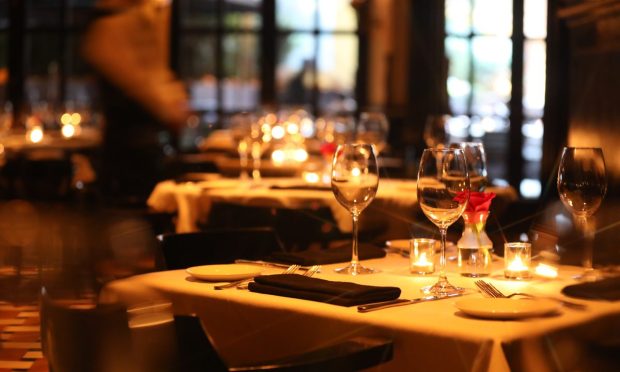Fine Dining Restaurants Take a la Carte Approach to Tableside Tech

As restaurants continue to come up against labor challenges, and some struggle to raise wages in the face of margin pressures from skyrocketing food prices, many brands are turning to efficiency-boosting digital technologies to make ends meet.
While quick-service restaurants (QSRs) have the advantage of being able to focus on optimizing speed and capacity, and while casual dining venues get some leeway in terms of service quality, fine dining restaurants are challenged to strike a difficult balance between hospitality and technology. While some are sticking to conducting business the old-fashioned way, others are pushing ahead with tech-centric strategies that change the dining experience.
“We’re taking payments right at the table,” Jarred Drown, owner and general manager at Lake Michigan’s Terrace Bay Hotel, told PYMNTS in an interview discussing how the hotel’s restaurant, Freshwater Tavern, is handling labor and inflationary challenges. He noted that the brand recently switched point of sale (POS) system providers from TouchBistro to Lightspeed to enable integration between restaurant payments and the hotel’s property management system.
“There seems to be a stigma against doing that at the higher end restaurants, and we just decided we’re going to do it anyways,” he said. “It helps you turn tables faster and, in our opinion, gives better customer service, and our customers have no problem with it. … It speeds up the whole process, and even in high-end restaurants, speeding up the service gives an impression of better service.”
The Tech Tradeoff
On-premises restaurant customers tend to be more mixed about how technology affects their dining experience than their off-premises customers, according to findings from May/June edition of PYMNTS’ Digital Divide study, The Digital Divide: Technology, The Metaverse And The Future Of Dining Out, created in collaboration with Paytronix, which drew from a survey of about 2,500 U.S. consumers.
For instance, the study reveals that 51% of grab-and-go customers say viewing a menu with a QR code has a positive impact on their satisfaction, while only 26% of dine-in customers say the same. Similarly, the same share of grab-and-go customers say ordering through a self-service kiosk would positively impact their satisfaction, while only 20% of dine-in customers say the same.
Related: Restaurants Tinker With Tech Recipe to Balance Efficiency and Personal Service
Drown, however, argued that speed of service has recently been “becoming more and more important” at high-end restaurants.
“It’s always been important at the mid-scale, fast-casual places, but traditionally people wanted to sit down for a long time at higher end places,” he said, “and they don’t anymore.”
All in One
Drown noted that the company prioritizes integrated payments above other concerns such as minimizing card processing fees. He noted that switching from a separate credit card processor to an integrated system led to “very marginally higher processing fees,” but the switch was worth it based on the labor and effort saved.
“It’s just way easier to manage refunds. chargebacks questions that customers have about their bills, anything it’s all there, and you’re using one support team,” he said. “It’s just easier from an operational standpoint to have that integrated.”
Additionally, he noted that enabling hotel guests to charge restaurant items to their room is key to the hospitality experience, enabling a single, cohesive experience across the hotel’s properties.
Exclusivity Versus Accessibility
Technology versus traditional service is not the only delicate balance about which higher-end restaurants need to be concerned. There is also the question of focusing on driving as many sales as possible versus providing the best possible experience for dine-in customers.
Drown noted that, when on-premises dining came back, Freshwater Tavern decided to “completely ditch the to-go stuff” to satisfy dine-in demand. He added that offering the restaurant’s food on different delivery marketplaces “really killed us” when venues began reopening, given that “demand was super high” for on-premises.
He recalled that, where in pre-pandemic times the restaurant may have had 10 off-premises meals to prepare, that demand increased in recent years to “sometimes 50, 70 meals.”
“Meanwhile you have 150 to 200 people trying to sit down at your restaurant, and you’re giving mediocre service to them,” he said. “You’ve got to know who you are and who you want to be.”
